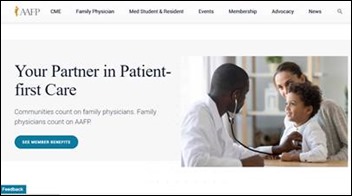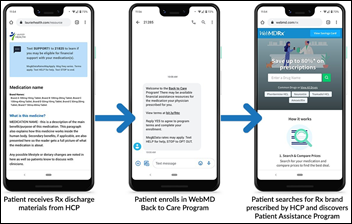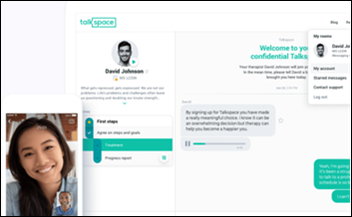News 8/21/20
Top News
The Wall Street Journal reports that COVID-19 hospitalization data reporting, which was moved to an HHS system with little warning and with criticism from some members of Congress, will return to CDC’s control under a new system.
HHS denies the report, saying that no plan is on the table to have CDC take over again.
The WSJ article quotes a recent statement from Deborah Birx, MD that it interprets as signalling a move to a new CDC system. It did not read that way to me.
In a possibly related item, Politico reports that the federal government has launched Modernizing Public Health Reporting and Surveillance, a multi-year initiative to improve data quality at state and local health departments. Ideas being discussed include automating hospital and lab reporting, moving to electronic case reporting, replacing data systems, and digitizing mobile coronavirus testing sites. Experts worry that the program will conflict with existing efforts and question whether technologists at the White House’s US Digital Service have the knowledge to solve a problem that has vexed public health officials for years.
HIStalk Announcements and Requests

Welcome to new HIStalk Platinum Sponsor Healthcare Triangle. The Pleasonton, CA-based company brings together healthcare cloud and security vendor 8K Miles and health IT advisory and implementation services consultancy Cornerstone Advisors. It offers services such as IT strategy and planning, cloud technology, Epic and Meditech consulting, EHR managed services, backup and disaster recovery, data management and analytics, performance data, value-based care insights, supply chain management, and staffing optimization. The company’s customers include provider, payer, and life sciences organizations, with five of the world’s biggest pharma companies using its healthcare data pipeline management, analytics, and aggregation services. I interviewed Chairman and CEO Suresh Venkatachari a couple of months ago. Thanks to Healthcare Triangle for supporting HIStalk.
I cruised YouTube for Health Triangle videos and found this “Week in Review” series that I think is brilliant, especially given that I have no interest in the usual lame podcasts and videos from industry amateurs. The host is Health Triangle Director of Business Development and industry long-timer Damian David, who delivers a smooth, relaxing news recap and interview that he follows with a remarkably good song performance. Other episodes feature fine covers of “With or Without You,” “Sweet Melissa,” “The Wind Cries Mary,” and “Ring of Fire.”
Listening: new from Bully, which sounds like a new grunge album from Courtney Love and/or Hole. Bully isn’t really a band any more – singer-songwriter Alicia Bognanno did a Courtney in in sending her musical mates packing while keeping their collective moniker. She’s also like Love in being bipolar and thus prone to sprinkling her recordings with therapeutic yelling and growling that makes you happy she’s not mad at you. Bognanno is amused by those who compare her music to grunge, explaining that being born in 1990 means she didn’t exactly grow up listening to Nirvana.
Webinars
September 3 (Thursday) 2:00 ET. “How Does A Global Pandemic Reshape Health IT? A Panel Discussion.” Sponsor: Intelligent Medical Objects. Presenters: Rob Wallace, chief product officer, IMO; Andrew S. Kanter, MD, MPH, chief medical officer, IMO; Lori Kevin, VP of enterprise IT and security, IMO; Sahas Subramanian, MCA, enterprise architect, IMO. As COVID-19 continues to spread, regulation changes, code system updates, and an increased reliance on technology are making it hard to stay on top of the many ways the pandemic is altering health IT. What’s more, we’re confronting challenges that rely heavily on technological solutions – like accurate reporting tools or telehealth adaptations – and we need those solutions now. The panel of subject matter experts across the enterprise will share insights on how the global pandemic is reshaping the health IT world.
Previous webinars are on our YouTube channel. Contact Lorre to present your own.
Acquisitions, Funding, Business, and Stock

Clinical communications vendor Vocera acquires EASE Applications, which has developed messaging tools to help family members communicate with a patient’s care team during hospital stays. EASE co-founder Patrick de la Roza, now an SVP/GM at Vocera, started the company while working as a system administrator at AdventHealth Nicholson Center in Orlando.

Bankrupt smart pill developer Proteus Digital Health sells its assets to Japan-based pharmaceutical company Otsuka for $15 million. Otsuka had been an investor and partner of Proteus, which pre-bust was valued at $1.5 billion, apparently by folks with unreasonably optimistic expectations. Going down in flames with Proteus is the nearly $500 million poured into it by investors who rode the rocket up and then down through a Series H funding round.

Change Healthcare enhances its Enterprise Imaging Network with the acquisition of Nucleus.io, a cloud-based medical imaging company.
Emids acquires payer-focused IT consulting company FlexTech, its second acquisition since purchasing Encore Health Resources in 2017.

Urgent and primary care software vendor Experity acquires patient relationship management company Calibrater Health.
Year-old, China-based health platform operator JD Health raises $830 million in a Series B funding round. The company – which raised $1 billion in November 2019 Series A round that valued it at $7 billion – offers pharmacy delivery, telehealth services, genetic testing, and hospital systems. It processes 100,000 diagnostic inquiries each day and is working on an online family doctor service that will serve up to 50 million families. New investor Hillhouse Capital was founded in 2005 by a Yale graduate with $20 million in seed capital from Yale’s endowment fund and was named after a New Haven street. The investment firm, which focuses on businesses in Asia, runs a joint venture with Mayo Clinic to boost that provider’s influence in China.
Sales
- Genesis Health System (IA) will use Bright.md’s SmartExam software to power its expanded telemedicine service.
- Florida-based hospice Haven selects Netsmart’s MyUnity EHR.
People


Impact Advisors promotes Susan Stewart to VP and Amy Reid to VP of recruiting.

Senior home care support and technology vendor Seniorlink hires Amy McConnell (NantHealth) as chief compliance officer.

Steve Eckert (Avaap) joins Cook Children’s Health Care System (TX) as CTO.
Announcements and Implementations

Baptist Health South Florida President and CEO Brian Keeley says the health system will spend upwards of $100 million on a digital transformation over the next several years that will include adding new scheduling and registration capabilities to its Cerner system; investing in analytics; upgrading its website with more patient engagement tools; and bolstering its Amwell-powered Care on Demand telemedicine app. The search for a chief digital officer is underway.
In Australia, SA Health implements interoperability software and services from InterSystems to interface its Notifiable Infectious Disease Surveillance system with new workflow technology as it prepares for future waves of COVID-19.
Carilion Clinic (VA) implements Wolters Kluwer’s AI-powered Sentri7 clinical surveillance software to more quickly identify patients at risk for C. diff infections.
Higi adds OptimizeRx’s prescription savings and patient educational materials to its Smart Health Stations that are installed in pharmacies and retailers.

Capsule Technologies announces GA of a cloud version of its Ventilated Patient Surveillance workstation that runs on Microsoft Azure.
COVID-19
Researchers find from cell phone data that 7% of workers at a given nursing home also work in at least one other facility, calculating that eliminating such shared staffing would reduce COVID-19 infections by 44%.
The federal government forced companies to manufacture billions of dollars worth of ventilators under the Defense Production Act, but most of them are gathering dust in the national stockpile as COVID-19 treatment protocols de-emphasized their use after a high percentage of intubated patients died and their role in infecting caregivers was questioned. Less then one-fourth of hospitalized COVID-19 patients are placed on ventilators, a big drop from the pandemic’s early days. The federal government says it will either sell or give away dozens of thousands of the devices to other countries.
Pooled COVID-19 testing, which worked well in other countries to reduce the use of short-supply reagents, can’t be used in the US because our infection rates are so high. Partial samples from several patients are combined, the batch is tested for coronavirus, and a positive result triggers re-testing of the retained samples from the batch. Efficiency is good until positivity rates hit 5-10%, at which time the re-testing that is required takes more labor and reagent than testing the individual samples. Experts also question whether the pooled tests miss people with low levels of virus and worry about the extra work that is required for lab techs since robotic processors are overwhelmed.

I received a forwarded internal email from Baylor College of Medicine that looked at the Houston metro area’s wildly fluctuating COVID-19 testing numbers, which recently tripled. That turned out to have been caused by a state system upgrade on August 1 that increased doubled reporting capacity, which triggered a big surge as the backlog was being cleared. The email notes that public health has poorly integrated systems and still are sent manual results, including faxes, that someone has to enter.
Other

University of Colorado Health CMIO CT Lin, MD shares numbers on video versus in-person visits since the beginning of the year. In-person visits (purple) dropped off sharply in early March and were outnumbered in a handful of weeks by the virtual visits (cyan), but in-person visits have mostly recovered after the state ended its stay-at-home policy and virtual visits have gone back down. Total visit counts seem about the same now as in January and February, but virtual visits went from essentially zero to about 15% of the total. Extrapolation is always dangerous — especially looking at the seemingly unstoppable telehealth upturn in March — but one might speculate that even though some patients have been forced to discover the convenience and lower infection exposure of virtual visits, they still prefer seeing clinicians in person and having related services provided at the same time. It may also be that either (a) they would rather have an in-person visit, but might have a virtual one forced upon them for one reason or another; or (b) clinicians either get paid more predictably or can offer more services when sitting in the room with the patient. Visits from outside UCHealth’s network also aren’t accounted for, so third-party virtual visits and urgent care might be impacting the numbers. Lastly, it may be that a higher than normal number of virtual visits were due to deferred higher-acuity or chronic disease management services. I would be interested in seeing a drill-down of both visit types by nature of the visit, demographics of the patient, new versus existing patient, categorization of visits by diagnosis and services rendered, and the recency of previous visits.
I missed this earlier as an interesting wearables story. Texas Tech fires its woman’s basketball coach one day after a USA Today investigative report calls out its “culture of abuse” that included forcing players to wear heart rate monitors during games and punishing those whose pulse dropped below 90% of capacity for more than two minutes.
Sponsor Updates
- Medicomp Systems releases an updated version of its Quippe Nursing care planning and clinical documentation software.
- Goliath Technologies publishes a new case study, “Terralogic, IT Service Provider, Avoids ‘Citrix is Slow’ Escalations.”
- Phynd’s Schedule Advisor, which allows patients to see a provider’s open scheduling slots, is now available in Epic’s App Orchard.
- The HCI Group launches a Referral Incentive Program Department.
- PatientPing and Lyniate will develop a hospital connector solution for integrating ADT notifications using integration engines from Corepoint and then Rhapsody.
- Kyruus adds online scheduling for virtual visits to its ProviderMatch for Consumers software for health systems.
- KDL Lab in Russia implements InterSystems TrakCare Lab Enterprise.
- Pure Storage publishes a new case study, “McArthur Lab Adds Capacity and Performance with FlashBlade.”
- Capsule announces GA of a cloud-deployed and -managed version of its Ventilated Patient Surveillance workstation, part of its Medical Device Information platform.
- Nuance’s virtual assistant technology for Hey Epic! in Hyperspace is now available through its Dragon Medical One cloud-based clinical documentation solution.
Blog Posts
- Virtual Roundtable: Physician Leaders Discuss How to Maximize the Value of Unique Device Identifiers (UDIs) (First Databank Health)
- As COVID-19 Overloads Hospitals and ICUs, Glycemic Management Can Help (Glytec)
- How McKesson used Google Cloud to rethink their database architecture (Google Cloud)
- Virtual Implementation for Cloud Communications Platforms (Halo Health)
- Build Versus Buy a Healthcare Enterprise Data Warehouse: How IT Leaders Choose the Best Option for Their Organizations (Health Catalyst)
- 5 Tips for Successfully Implementing Charlie in Your Prescription Renewal Workflows (Healthfinch)
- SHIEC 2020: Imat Solutions Giving HIEs Power to Expand Service Offerings (Imat Solutions)
- Leading Academic Study Shows the Value of Imprivata OneSign to Hospitalists (Imprivata)
- The 20-Year Evolution of Patient Electronic Signatures (Access)
- Building trusted relationships in this time of remote connections (Infor)
- Telehealth: Any Way You Want It (PMD)
- 3 Often Overlooked Payment Channels That Can Help Streamline Collections (InstaMed)
- History, never repeats. Or does it? (InterSystems)
- Supply Chain Management During a Medical Surge: How Hospitals Can Work Together (LiveProcess)
- Virtual Health Demands Virtual, Affordable Patient Payment (Loyale Healthcare)
- 6 Signs It’s Time to Hire a Physical Therapy Practice Management Consultant (MWTherapy)
- Our Healthcare Heroes Deserve a Day of Rest (Netsmart)
Contacts
Mr. H, Lorre, Jenn, Dr. Jayne.
Get HIStalk updates.
Send news or rumors.
Contact us.































































Anything related to defense will need to go to Genesis.